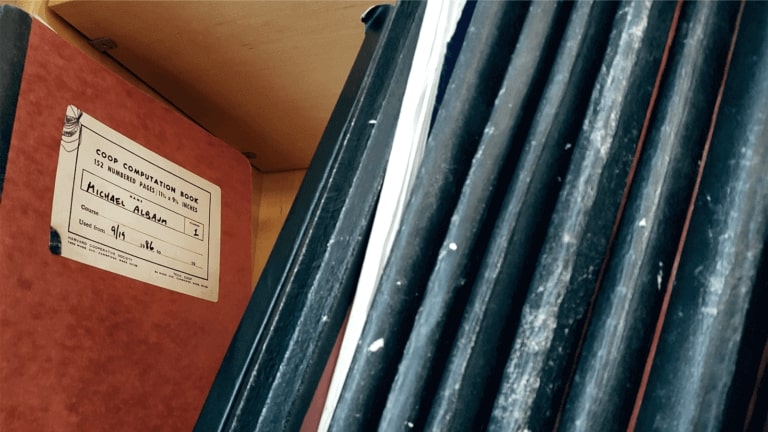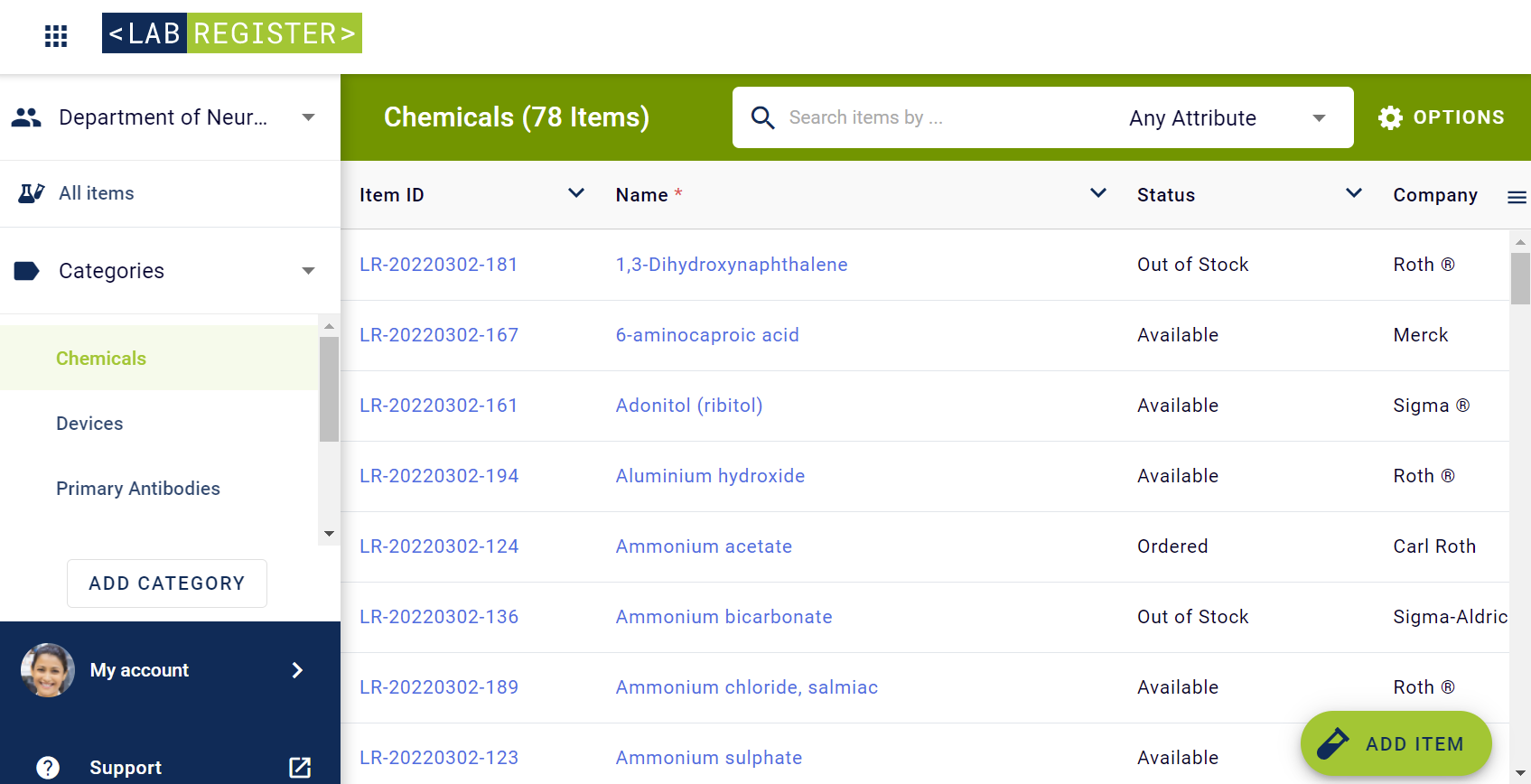
Hello, my name is Simon Bungers, I’m the founder and CEO of the company developing Labfolder , an Electronic Lab Notebook (ELN) built by scientists, for scientists.
Although I usually spend my days being the chief promoter of the ELN our team has created, this article is NOT about Labfolder. Rather, it is an attempt to create a comprehensive guide to the electronic lab notebook, in the hope that it would make it easier for researchers to switch from paper to a digital notebook. After all, the intelligent lab of the future is a digital one.
Towards the end of this article, I will be highlighting 5 electronic lab notebooks that you should consider, and provide a scorecard template as a free downloadable resource to help you with your ELN review.
In the meantime, If you want to learn more about Labfolder, please visit our homepage or watch the video introduction below.
I decided to dedicate my career to the paperless lab after spending years in the lab at the Max-Planck-Institute of Experimental Medicine, frustrated with the experience of recording experiments in a paper lab notebook. To this day, I can still remember my first failure to reproduce an experiment.

My group leader came to me and asked me to retrieve a particular experiment that he performed 5 years ago.
First, I had to find that particular notebook among the hundreds that we had stored in the lab’s several filing cabinets… Half an hour and one notebook later, I still found it really hard to organize the information I acquired.
A lot of details were missing, and I couldn’t even decipher the handwriting in some cases… I ended up setting up most of the methodology from scratch!
In my lab we had countless filing cabinets…
(Image Source: Harvard School of Public Health)
There was no surprise when my experiments showed different results than those observed 5 years ago.
It was my first direct encounter with the reproducibility problem. If the methods to record complex experiments are prone to error, so that reproducible results cannot be guaranteed, how could you ever be sure you’re dealing with real insights and not random information?
It’s been over 10 years since my start as a PhD student, but the landscape hasn’t changed much since. I’d bet you’ve experienced similar frustrations during your research.

The electronic lab notebook provides the missing infrastructure for data recording, retrieval and integrity.
Some of the typical complaints I hear from researchers include:
“I need to find raw data from an experiment I performed years ago but do not recall exactly where I stored that information.”
“I want to replicate an experiment from a colleague, and need some additional information, but that person has already left our organization.”
“I cannot use the data needed to continue a group project, because the person who holds the specific data set went on holidays without a full handover, or unexpectedly took ill.”
These situations are very recognizable to the average researcher, and have dramatically increased demand for ELN software. So… let’s get started and discuss how you should structure your search to find the most suitable electronic lab notebook for your research team.
Let’s start with the basics. An electronic lab notebook must be able to create, import, store and retrieve all important data types in digital format. Important examples include:
Example of a data entry in Labfolder
Tip: to better understand the sophistication of a digital notebook’s search functionality, try testing whether the ELN can handle scientific unit conversions. If you can tell an ELN to search for all entries which reference 5 microliters of DNA solution, and the search query also returns entries which have recorded this as 0,005 milliliters, then you know that the search functionality has really been built with scientists in mind.
Perhaps one of the most crucial questions to consider in advance is the following: where do you want to store your research data? Cloud-computing solutions are rapidly becoming the norm for most industries, but scientific institutions are slower to adapt in this case and often prefer to operate on an on-premise, self-hosted server. Here is an overview of the most common options.
Most ELNs would store your data on a cloud server as the default option, often hosted on Amazon Web Services or Microsoft Azure.
For those organizations that would consider a cloud solution, but prefer to not share servers with other organizations, a private cloud may be the best solution. Ask the ELN provider you’re considering if this is possible, as not all companies offer this.
The more conservative but still popular approach is to select an on-premise server.
Your organization’s policy regarding data storage will be the key decision maker here. Large organizations with a big IT department often prefer to have an on-premise solution to be in full control, and are willing to pay extra for that reassurance. Smaller companies and research institutions are generally more willing to take advantage of the capabilities offered by cloud computing, especially those provided by Amazon or Microsoft.
There is always a fine balance between sharing information in a collaborative environment and protecting your data. Developing innovative solutions is complicated, and requires teamwork between experts in their field. Failure to collaborate can lead to wasted time, effort, and funding.
On the other hand, many scientists are ambivalent about how open the research process should be, fearing an increase in mistakes, misunderstandings, and vulnerabilities.
The electronic lab notebook is a balanced solution to this conundrum that offers several critical features.
You should be able to create groups and define who should have access to what, by:
The larger your team is, the more important it becomes to have the tools available for communicating with your team and sharing data in organized fashion. Examples include:
Just as with your paper lab notebook, an electronic lab notebook must have certain safeguards in place to protect data integrity:
Lab inventory management is a whole topic on its own, and there are several software developers who have created dedicated inventory tracking systems. A 2015 Nature article describes how these systems range from paper filing, to home-made databases, all the way to expensive enterprise-level software.
In recent years, ELN providers have started to incorporate some of these features in their electronic lab notebooks, which makes total sense for scientists. Instead of buying many different software packages, why not use a one-stop shop for all your lab management needs?

Tracking your lab inventory in Labregister, Labfolder’s built in lab inventory management system
Here are some common inventory management features found in ELNs:
Research laboratories which look to patent and commercialize their inventions undergo more scrutiny in terms of complying with standards, regulations and best practices.
Some of the most important ones include GLP Compliance, FDA 21 CFR Part 11, and ISO certification. We wrote plenty of blog posts and white papers on these topics, which allows me for the purpose of this article to jump right into the topic of which features ensure your electronic lab notebook is compliant with all these regulations and standards.
Let’s start with the Good Laboratory Practices (GLP) which were introduced by the OECD. There are principles that apply in particular to electronic lab notebooks, which mostly prescribe how data should be stored, secured and managed.
Here are the features an ELN needs to have before you can be assured that you are GLP compliant:
Next, if your lab is seeking to produce pharmaceutical drugs, vaccines, bio-pharmaceuticals or any other product or treatment regulated by the Food and Drug Administration (FDA), you will need to make sure that your digital records are considered as trustworthy and reliable to paper records. This is covered in Title 21 CFR Part 11 of the Code of Federal Regulations.
To ensure this is the case, your ELN must do the following:
In an ISO certified environment, it is also important to make sure that certain standards are followed as to how documentation should be maintained. The ISO standards most relevant to laboratories are ISO 9001 (general quality management), ISO 15189 (medical and diagnostic laboratories), and ISO 17025 (testing and calibration laboratories).
This means that ELNs must:
At least until the ELN industry reaches a more mature stage, it is unlikely that every researcher can find the perfect ELN that suits the needs of their team. After all, there are so many people that are stakeholders in selecting an electronic lab notebook: the lab manager, the Head of R&D, the IT manager, the QA/QM manager, post-doc researchers, etc.
Luckily, a few electronic lab notebook companies have recognized this challenge, and are providing a platform that allows scientists to select a third-party plugin or app from an “ELN app store”, whether generic integrations such a Dropbox, or research-specific solution such as Figshare’s data management solution.
For those with IT resources, several ELN providers also allow you to develop your own custom solution to interact with the electronic lab notebook, via an open API.
At Labforward, we have seen our customers come up with really innovative use cases. Examples include a hospital research lab which automatically transfers patient files to their notebook, or a food laboratory which integrated balances, thermometers and plate readers to automatically send data to the right notebook entry.
The possibilities are really endless with an open API. One of my favorite examples is the video below, which shows what the SmartLab consortium has built on top of Labfolder back in 2017.
Innovative solutions such as the SmartLab are really what electronic lab notebooks should be all about. The sooner researchers adopt an ELN, the faster the entire lab informatics industry will advance and bring us process automation, AI tools to help us with decision making, and so on. The lab of the future is almost here!